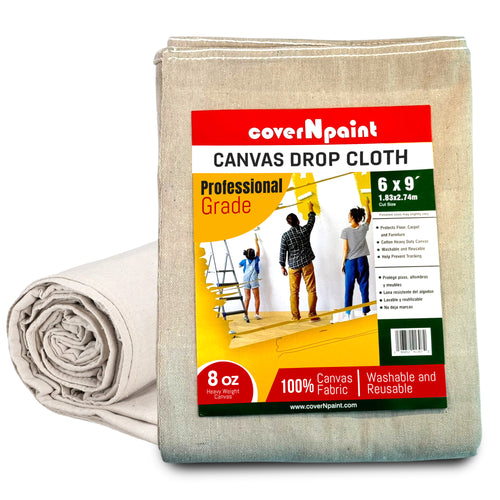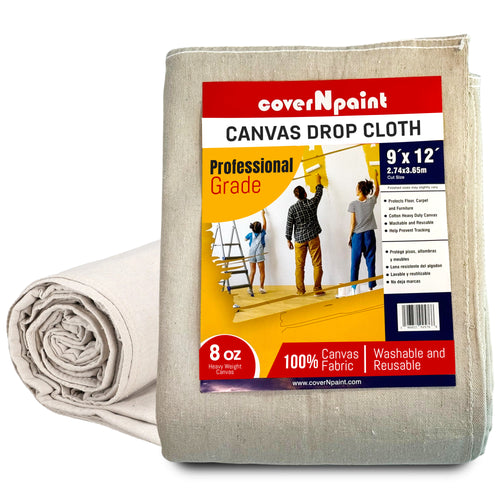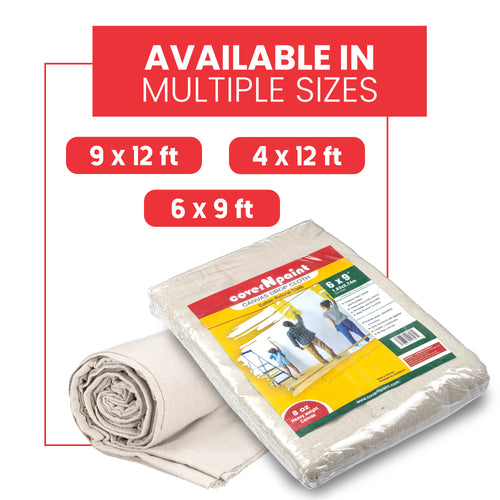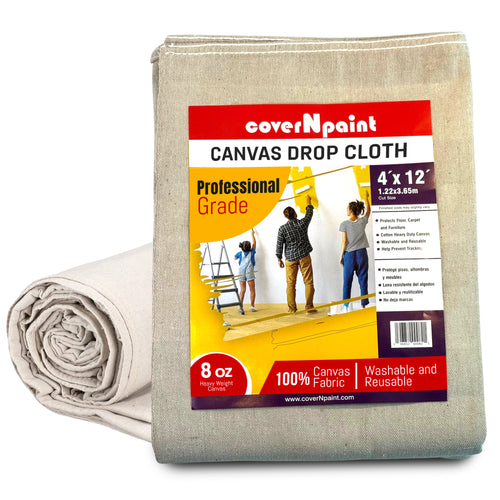In 2025, sustainability is no longer a trend — it’s a responsibility. Whether you’re a professional painter or a DIY enthusiast, your painting practices can significantly impact the environment. One of the simplest yet most effective steps toward eco-friendly painting is reusing paint tarps and painters drop cloths.
Traditionally, disposable paint drop cloths or plastic covers were the go-to options for surface protection. However, these materials often end up in landfills, contributing to long-term pollution. By switching to reusable canvas drop cloths and paint tarps, painters can minimize waste, reduce costs, and promote greener practices without compromising performance.
This guide explores the eco-friendly advantages of reusing paint tarps in 2025, supported by expert insight, sustainable practices, and real-world benefits.
Why Reusing Paint Tarps Matters In 2025
As global awareness of climate change and waste reduction grows, industries are making eco-conscious shifts — and painting is no exception. Reusing paint tarps not only prevents waste but also supports:
-
Reduced Plastic Consumption: Traditional plastic tarps are single-use and non-biodegradable. Reusing canvas alternatives limits plastic waste.
-
Lower Carbon Footprint: Fewer manufacturing cycles mean less energy consumption and reduced emissions.
-
Sustainable Painting Habits: Using one durable tarp across multiple projects aligns with 2025’s green living standards.
These practices reflect a people-first approach — empowering painters to make environmentally responsible decisions that also benefit their wallets.
The Environmental Impact Of Disposable Drop Cloths
Disposable paint drop cloths may seem convenient, but they carry hidden environmental costs.
-
Non-Biodegradable Waste: Plastic tarps can take up to 500 years to decompose.
-
Resource-Intensive Production: Producing disposable plastics consumes significant fossil fuels and water.
-
Single-Use Culture: Frequent disposal leads to excessive landfill accumulation.
By contrast, canvas drop cloths and paint tarps made from natural cotton or blended fibers can be reused dozens of times, reducing environmental harm and waste output.
Eco-Friendly Advantages Of Reusing Paint Tarps
1. Reduction Of Plastic Waste
Reusing paint tarps directly reduces the volume of plastic waste generated by the painting industry. Each time a painter reuses a canvas drop cloth, it prevents another plastic sheet from being discarded after a single project.
2. Long-Term Cost Efficiency
While high-quality canvas drop cloths may cost slightly more upfront, they can last for years. The ability to wash, repair, and reuse makes them a far more sustainable and economical investment.
3. Lower Energy Consumption
Reusable materials require fewer production cycles, conserving the energy needed to manufacture disposable paint drop cloths. Over time, this small shift has a measurable impact on reducing overall carbon emissions.
4. Multi-Purpose Functionality
Paint tarps are not limited to painting alone. They can be repurposed for:
-
Furniture protection during moving
-
Outdoor event shading
-
Craft projects or art backdrops
This versatility means fewer single-use materials across various household and professional tasks.
5. Improved Air Quality
Plastic drop cloths sometimes release volatile organic compounds (VOCs) when exposed to heat or sunlight. Reusable canvas drop cloths are VOC-free, helping maintain cleaner indoor air quality — a major health advantage for painters and homeowners.
Practical Ways To Extend The Life Of Paint Tarps
To truly gain eco-friendly benefits, maintenance plays a key role. Follow these expert-recommended practices to extend the lifespan of your paint tarps:
-
Clean Promptly After Use: Remove paint spots with mild detergent and water. Avoid using harsh chemicals.
-
Dry Thoroughly: Prevent mold and mildew by drying tarps completely before folding.
-
Fold And Store Correctly: Keep in a dry area away from moisture or direct sunlight.
-
Repair Small Tears: Patch up small holes or frays immediately to maintain full coverage.
-
Rotate Usage: Use older tarps for rough projects and newer ones for finishing work.
How Paint Tarps Support A Sustainable Painting Industry
Incorporating reusable painters drop cloths is part of a larger movement toward sustainability. Professionals and companies are realizing that eco-friendly practices are also cost-effective and reputation-building.
Painters who use canvas drop cloths are now more likely to attract environmentally conscious clients, positioning themselves as responsible and modern professionals. The simple act of reusing a tarp communicates awareness and care for the planet.
For related insights on safe handling of painters drop cloths, check out Painters Drop Cloth Safety Guide: Preventing Slips, Trips, and Falls — a detailed resource on maintaining safety while painting sustainably.
Comparing Canvas And Plastic Paint Tarps
|
Feature |
Canvas Drop Cloth |
Plastic Paint Tarp |
|
Reusability |
50+ uses with proper care |
Typically single-use |
|
Eco-Friendliness |
Made from natural fibers |
Petroleum-based |
|
Durability |
Tear-resistant and washable |
Prone to tearing |
|
Safety |
Non-slippery surface |
Slippery when wet |
|
Cost Over Time |
Cost-effective in the long term |
Expensive when frequently replaced |
This comparison makes it clear why professionals and homeowners in 2025 are shifting toward reusable paint tarps and canvas drop cloths.
A Curiosity-Building Note
Many painters underestimate how much waste can be reduced simply by reusing paint tarps. Small adjustments in cleaning, folding, and reapplication can dramatically extend their lifespan. coverNpaint USA continues to educate painters and DIY enthusiasts on sustainable painting solutions that help reduce waste and preserve natural resources.
Benefits Beyond The Environment
Reusing paint tarps doesn’t just benefit the planet — it improves painting outcomes and work efficiency:
-
Consistent Performance: Fabric becomes softer and easier to position over time.
-
Better Coverage: Properly maintained tarps conform to surfaces for cleaner edges.
-
Professional Appeal: Clients increasingly appreciate visible eco-friendly efforts.
In 2025, sustainable practices aren’t just about ethics — they’re part of quality craftsmanship.
FAQs
Q1: Are paint tarps recyclable?
Most canvas drop cloths are made from natural cotton fibers, which are biodegradable and eco-friendly. Plastic tarps, however, are rarely recyclable.
Q2: How many times can a paint tarp be reused?
A high-quality canvas drop cloth can be reused 40–60 times with proper care and cleaning.
Q3: What’s the best way to clean reusable paint tarps?
Use cold water and mild detergent, then air-dry completely. Avoid bleach or high heat to maintain fabric strength.
Q4: Are reusable drop cloths safer than plastic ones?
Yes, canvas drop cloths offer better grip and reduce the risk of slipping or tripping.
Q5: Do eco-friendly tarps cost more?
Initially, yes — but their reusability makes them more cost-effective than buying disposable plastic tarps repeatedly.













